Spring is on the starting blocks, the wet and cold weather is more and more substituted by bright, sunny and blue-sky days and so it becomes more and more unbearable for me to see GEKKO on the trailer – I´d rather have her in the water as daytime temperatures reach 10 and more. So, let´s hurry and get her going, I said to our team and as such there are just a few last works open on the list. One of them had been finished some days ago with a refreshment of GEKKOs antifouling and while she was hanging in her hoisting slings, I gathered our electric and electronic specialists for an on-site briefing.
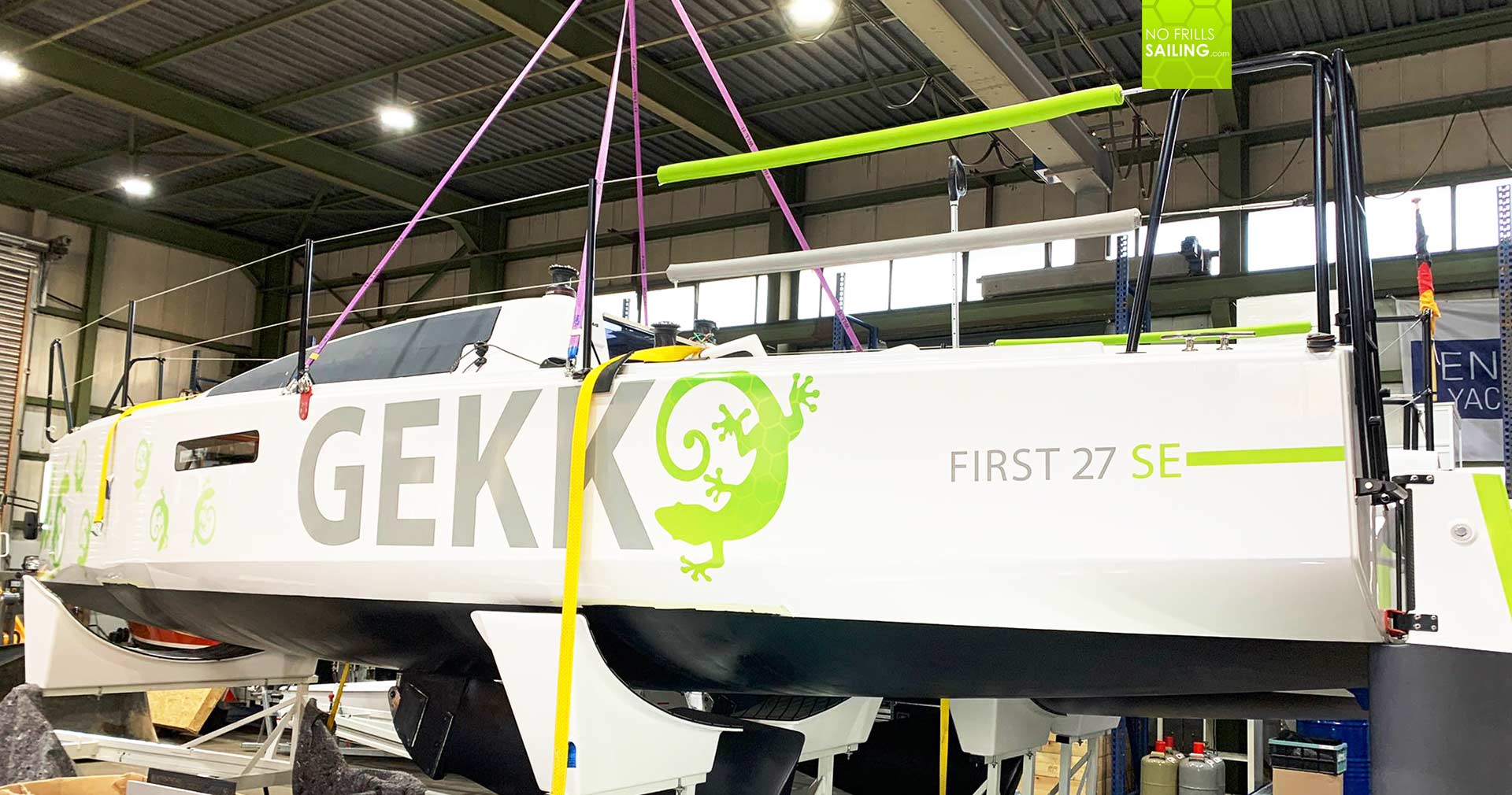
The task seems easy: Wiring of the solar panels and, to solve the battery contradiction (which is the big boy battery is rarely used and the small battery must keep the electronic equipment including autopilot up and running). The latter will be done after we close the solar panel case. Before I start: Let me be clear on one thing. The job of installing solar panels on a boat is certainly not a no-brainer and shouldn´t be done by any hobby electrician. I must admit that I was a bit blue-eyed on this and – as you will read now in my article – absolutely underestimated the level of competence that is needed to do it properly. You should – in any case – hire a professional electronics expert to have your solar power array installed and wired.
Delivery troubles and a decision
Now, it took me so long to get going because, as with everything nowadays, I experienced serious trouble in acquiring the hardware needed. You may know that my boat is an all-electric First 27 SE with a Torqeedo Cruise 4.0 engine-setup. So it makes not only sense but it is imperative to use Torqeedo-accessories for additional equipment. The explanation is simple: The big WH 48-5000 Lithium-battery has a very specific charging characteristic. The company implies that the battery may not “accept” any incoming electric charging and produce an error if this charging characteristic isn´t supplied. Apart from errors and a failure in charging, the loosing of warranty and possible damage may occur.
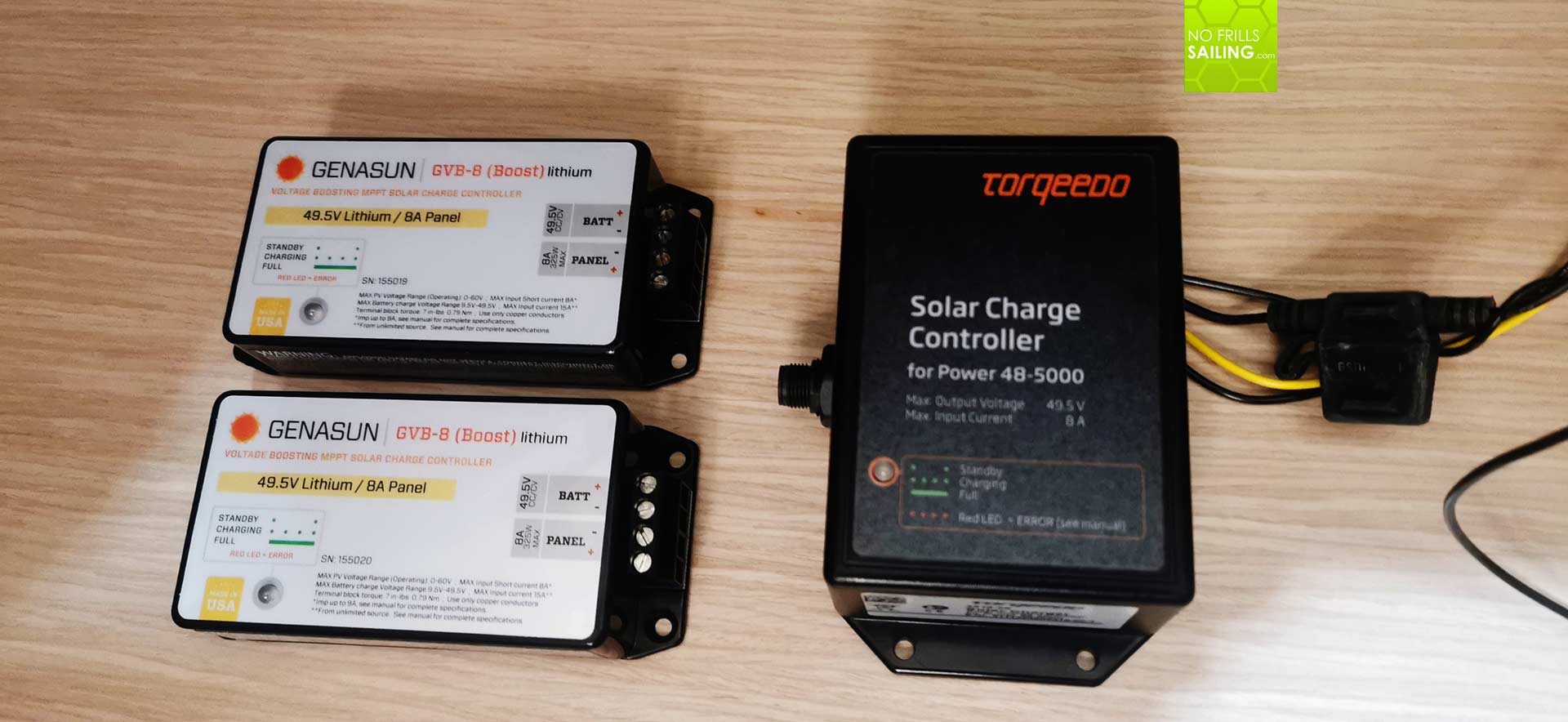
My problem: Solar chargers for the WH 48-5000 are completely sold out worldwide. I tried the official web shop, I tried a dozen or so certified dealers and – thanks to my unique access to the business – I tried my personal contacts even up to mid-level management of the German company … without success. There aren´t any solar charging devices available until “June or July 2022”, as they said. This was end of last year. As we are all experiencing shortages and my #atlanticloop-project is on the horizon (I want to leave Europe in May!), I had to look for an alternative. I cannot disclose how but I managed to acquire two solar charging devices by Californian company Genasun/Sunforge which are programmed to deliver the exact charging characteristic as the original Torqeedo-device does. I know that I risk my warranty, but that is the only way to somehow keep the project on track.
Where to install the equipment?
After four or five weeks of waiting time the two new charging devices arrived. Why three through? Well, as I do have three major solar panels, each panel needs an own charging device to feed the electric current to the battery. As I assume, the large horizontally aligned central panel will be the one delivering most of this current, we will have this panel wired to the original Torqeedo-charger. The two additional side panels will get the Genasun-devices. I don´t know yet if this will work but judging from people I spoke to who have similar installations, this should be okay. In any case, this is my only chance to get GEKKO up and running in time.
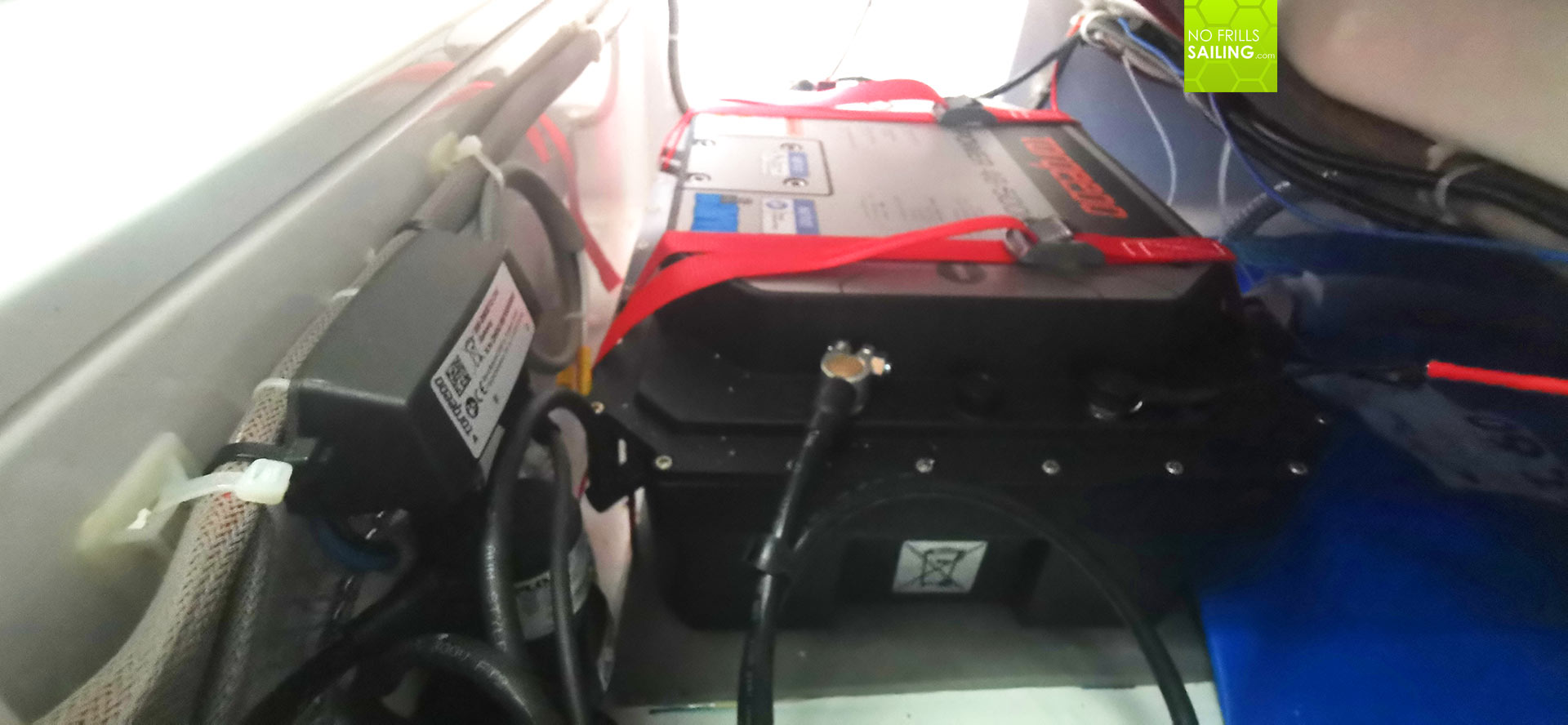
Now that the hardware has arrived, I met with our electronics- and electrics-expert Jens who is a skilled craftsman. We sat inside GEKKO and I showed him the parts, explain the idea and my own little scribble (the one you saw as cover-picture for this article). Jens asked a lot of questions, of which for most I had no answers, again, kudos to Solbian who agreed to answer meticulously to all of them instead. This is true client-oriented service! “The solar charging devices should be mounted as near to the battery as possible”, was one of the advices. So we took a look underneath the GRP-lid. We decided that we will re-locate the battery some 15 centimeters to the back of the boat. In this, we will create some space right in front of it where the solar chargers could be installed easily.
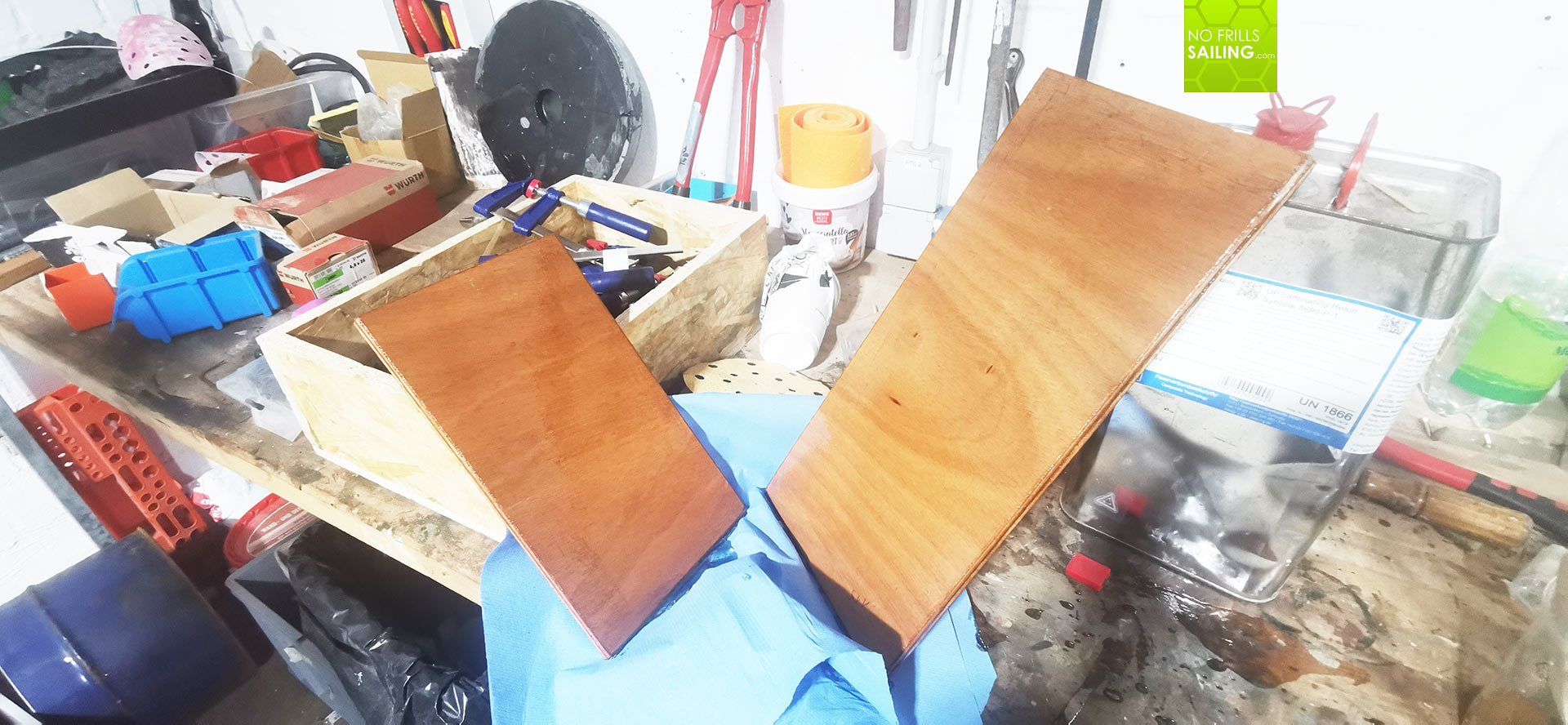
As this place is the backside of the fridge, boreholes and screws are a no-go. Our master technician Thore suggested to use wooden panels as mounting plates which will be glued to the boat itself, which is a great idea. We took measurements and went for a 40 by 20 centimeters panel to mount the solar-devices to and another smaller panel to accept the DC/DC-modifier for the battery-charging. To prevent the wooden parts from getting wet or rot, we went on to impregnate them with Epoxy for a waterproof status.
The wiring plan
Sitting inside the boat, Jens looked at the wires. The three panels are in fact six, which means that 12 wires enter the inside of the boat. All wires of one panel have to be connected (in series) and passed through the whole boat from the front roofs all the way back and down to the charging devices: “We will need a nice cable-duct to disguise the wires and keep them dry. Jens will show some examples. I am curious furthermore how he plans to attach the ducts to the vacuum infused B-side of the boat´s roof and of course I hope it won´t destroy too much of the interior appearance of GEKKO.
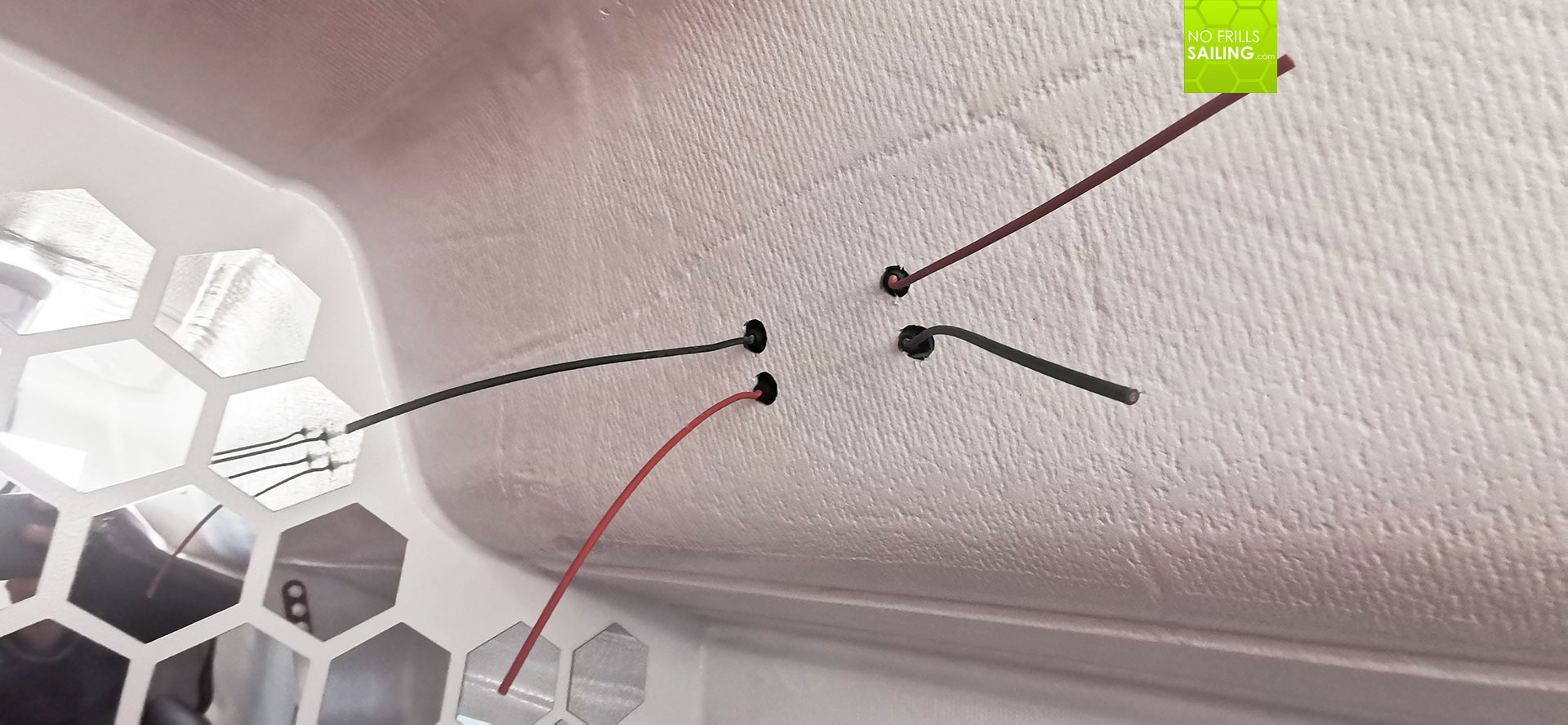
Two days after our little briefing session Jens sent a preliminary connection diagram. It was much, much more complex that I initially had thought: Together with Michael or Solbian he decided to have a main switch for the whole system, together with a 100 A fuse. Furthermore the wiring of the solar chargers will also be safeguarded by three 10 A fuses. The chargers will be connected to the panels which can now load the battery independently from each other. As I said earlier, the idea is that the big panel will “see” the sun first and “wake up” the battery, with one of the side panels, depending on the height and position of the sun, delivering surplus current.

Jens also already designed the connection diagram for the battery-to-battery project. There will be a separate main switch to disconnect the big Torqeedo-battery from the smaller 12 V domestic battery – this is needed because I do not want it to be constantly loaded. Also, when “waking up” and booting the WH 48-5000 battery, it is absolutely imperative that no current consumer is connected (which will make the computer do “blue screen”). Jens sent a wish list with a lot of material too which we immediately ordered: This is surplus equipment worth of approximately 250 Euros. Well, not a cheap thing to have a sustainable boat.
Let´s do this!
Depending on delivery times of this equipment I hope that either this or coming week Jens can start to work in the boat. I am really excited to see the system getting finished, wired and working. Beside my private schedule and a building pressure of time, we need to free our workshop as new and bigger boats are coming from the yard for commissioning. In this, GEKKOs new solar array can show what it is capable of very soon. As many of the parts have a built-in WiFi tracking system, like Sentinel, another big step will be the setup of this app-based monitoring to witness the actual outcome.

Our dedicated team helps me so much that it becomes very emotional. All my colleagues and team mates are going the extra mile, reading into the topic and educate themselves to produce a great outcome. In this, after closing time, they applied a layer of white gelcoat to the mounting panels – just for the “much nicer looks”, as they said. What a great team! GEKKO is not just my private project, it also a showcase for our company and a great “training object” for successive projects – you may have read my article on GEKKOs birthday, when another First 27 SE arrived. It seems that the owner of this boat is looking very closely what we are doing and kind of likes it …
You may also like to read these articles:
The complete #boatenergy and #solarpower series so far
All Seascape and Beneteau First related articles #thinkseascape
